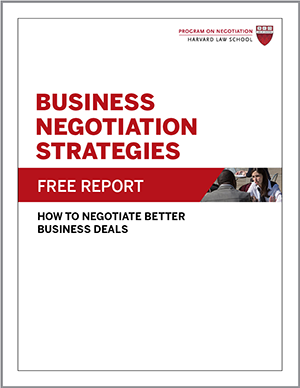
“A huge mistake.” “A shot in the dark.” “An audacious move.” Those are just a few of the media’s characterizations of the business partnership agreement between wireless carrier AT&T and media and entertainment firm Time Warner (now known as WarnerMedia). It was the biggest merger of 2016, with $85.4 billion in cash and stock transferring from AT&T to Time Warner, and also one of the most controversial of the year.
The merger would make AT&T the first U.S. wireless company to compete nationally with cable companies by offering an online-video bundle, similar to a cable-TV package, that would include Time Warner networks CNN, HBO, and TNT, as well as Warner Bros. productions. Meanwhile, Time Warner, long tethered to the cords of cable TV, would finally move into the wireless world.
Some analysts believed the move would help both companies grow. But U.S. regulators scrutinized the merger closely, concerned that industry consolidation would reduce competition and raise consumer prices.
We take an in-depth look at the deal and identify key lessons for negotiators facing the prospect of new business partnership agreement.
A business partnership agreement origin story
The first sparks between AT&T and Time Warner were ignited when Hollywood executive Peter Chernin, chairman and CEO of The Chernin Group and a partner with AT&T in an online media venture, met AT&T CEO Randall Stephenson over dinner on Martha’s Vineyard. Chernin, who had recently had a discussion with a high-ranking Time Warner executive, urged Stephenson to look into acquiring the media company for its content.
“That’s when I got it in my mind that these two companies could work together,” Stephenson told Bloomberg News. Facing the market saturation of its wireless business, AT&T was looking for ways to grow. Its satellite-TV service, DirectTV, was threatened by the increase in online and mobile viewing nationwide. Stephenson trusted in Chernin’s sense that Time Warner could give AT&T entrée into new, rapidly developing realms.
Just days after receiving Chernin’s recommendation, Stephenson had an exploratory meeting with Time Warner CEO Jeff Bewkes. The two had known each other for years, as DirectTV distributed Time Warner channels such as TBS and TNT. Within a few hours, the two men decided that a business partnership agreement might make sense.
Throwing them off the scent
During the “whirlwind courtship” that followed, Stephenson and Bewkes went to great lengths to keep the negotiations under wraps, concerned about a backlash from lawmakers and consumer advocacy groups, according to Bloomberg.
At first, a small group of only eight people, including Stephenson and Bewkes, even knew about the talks, which were code-named “Bobtail.” Negotiators from “Lily” (AT&T’s code name, after a character in one of the company’s ad campaigns) and “Rabbit” (Time Warner’s moniker, in homage to Warner Bros.’ Bugs Bunny) met in Washington, D.C.; Dallas; and Nashville, Tennessee to avoid arousing suspicions in New York.
Once bankers were needed to advise on the deal, a small number of representatives from Allen & Company, Citigroup, and other banks were brought in. Even the heads of Time Warner subsidiaries HBO, Warner Bros., and TBS were kept in the dark about the negotiations, according to the New York Times.
A deal emerges
AT&T was well aware that Time Warner’s primary interest in the negotiation was to get a high price. In 2014, the media company had turned down an $85-per-share bid from 21st Century Fox for being too low. Hoping to fend off competing offers from Google or Apple, AT&T was determined to make a bid for Time Warner that “it hoped couldn’t be refused,” Bloomberg reports.
A lesser concern for both parties was the risk that federal regulators would block the deal. The parties viewed their deal as a classic case of “vertical integration”—that is, a partnership between a company and its customer rather than between “horizontal” competitors—and thus unlikely to trigger serious antitrust concerns. AT&T agreed to pay Time Warner $500 million if the deal was blocked by regulators, the Wall Street Journal reports—a relatively small amount for such a significant deal.
By contrast, AT&T was far more concerned that another bidder would emerge to snatch away Time Warner before the deal closed. To reassure the telecom company, Time Warner promised to pay a hefty $1.7 billion so-called breakup fee if it ended up being outbid.
As for the purchase price, the two sides settled on $107.50 per share, well above Fox’s past offer. Bewkes, Stephenson, and a handful of other executives met at an airline hangar in Dallas to shake on the outlines of the agreement, according to the Times.
Eleven days later, the executives announced their merger, framing it as being a business partnership agreement to pursue growth opportunities rather than realize cost savings.
Key issues for a potential business partnership agreement
Reactions to the announcement were mixed, with several pivotal issues attracting attention.
1. The effect on outsiders. At the time, presidential candidates Hillary Clinton and Donald Trump both suggested the merger might be a bum deal for consumers. But Los Angeles Times writer David Lazarus predicted that the Justice Department and Federal Communications Commission would impose consumer protection conditions on the deal to protect AT&T customers, such as requiring that they be allowed to purchase access to individual Time Warner channels rather than packages only.
The issue reminds us of the importance of considering how a potential business partnership agreement is likely to affect parties who aren’t seated at the table, including customers and the public. This is especially true when you’re negotiating within an insular environment, as in the case of an interindustry partnership or a merger between corporate titans who might be inclined to focus first and foremost on the potential impact on their companies’ bottom lines.
Taking time to think about how your partnership will affect others not only should lead you to make more ethical decisions but also will help protect you from a public backlash and scrutiny from authorities.
2. A possible culture clash. Another open question in the merger between AT&T and Time Warner was whether the companies’ very different cultures would mesh successfully. Time Warner subsidiaries such as HBO, whose culture the New York Times characterized as “freewheeling,” could clash with “buttoned-up” AT&T. Stephenson and others at AT&T reportedly reassured the heads of HBO and other Time Warner entertainment divisions that they would retain full creative control of the content they produced and receive the funds they needed to succeed, but some observers were skeptical. “As Time Warner gets swallowed into this bigger enterprise and has to fight for resources, will they be successful or not?” Forrester Research analyst Jim Nail told CNBC. “They can very quickly fall behind.”
Wise negotiators take time to discuss not only the potential financial synergies of their proposed partnership but also how they will go about combining personnel and assets. Key questions, such as who will lead the new company, whether divisions will remain separate or integrate, whether layoffs and facilities closings will occur, and how the cultures will be merged, need to be negotiated thoroughly.
3. A high level of uncertainty. Given the volatility in the media and communications industries, most observers considered the long-term success of the AT&T–Time Warner merger to be highly uncertain. New York Times technology writer Farhad Manjoo called the agreement “speculative,” a “Hail Mary pass” aimed at doing “something, anything, to get some grip on a rapidly changing future.”
In your own negotiations, you might be able to reduce uncertainty about the future through a contingent contract— an “if, then” guarantee that you will each take certain actions based on how the future plays out. As is typical in mergers and acquisitions, AT&T and Time Warner negotiated contingencies to protect themselves during the time period before the deal’s closing, stipulating the payments they would make in the event that regulators scotched the deal or Time Warner accepted a better offer.
Contingencies can reduce risk and uncertainty not only during the preclosing period but also during the implementation stage of a deal. For example, if you are doubtful that a potential partner will be able to reach an ambitious delivery date for a new product, you could build incentives for on-time completion or penalties, or both, into your contract.
Is AT&T cursed?
In auctions and other types of bidding competitions, the winning bidder often pays more than the commodity up for sale is worth. This phenomenon is known as the winner’s curse because, as anticipated benefits fail to materialize, the “winner” may end up wishing she hadn’t gotten the prize.
In an interview with Fortune.com, Zacks Investment Management president Mitch Zacks characterized the AT&T–Time Warner business partnership agreement as a classic example of the winner’s curse: “Essentially, what is happening is AT&T is paying more for Time Warner than any other entity is willing to pay. It’s paying more than even Apple was willing to pay, and it’s paying a lot more than what the market is saying it’s worth. So by definition it’s overpaying.” (A few months before the AT&T deal was announced, Apple conducted preliminary merger talks with Time Warner but decided not to bid.)
Legendary dealmaker Bruce Wasserstein, who died in 2009, advised negotiators seeking to avoid the winner’s curse—or “winner’s dilemma,” as he called it—to assess whether they have a “comparative advantage” over other bidders, such as unique knowledge, capabilities, or resources, that would justify a high bid. AT&T supported its high bid for Time Warner by saying it was uniquely positioned to achieve synergy from its new relationship with Time Warner.
Ultimately, the deal was not as simple as the two entities had hoped. The Department of Justice sued both companies to block the deal. And while the deal did eventually go through, just a few years later, in early 2021, AT&T began spinning off its media assets to create a new content company with Discovery.
Do you have examples of mergers that didn’t go as well as hoped?




